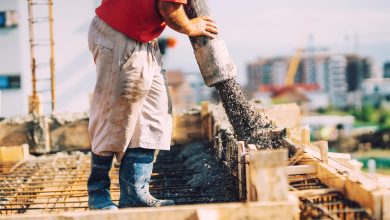Storms can wreak havoc on roofs, resulting in damages that require immediate attention to prevent any issues such as leaks, mold growth, and structural deterioration. Being knowledgeable on steps to storm damage roof repair can save homeowners time and effort.
If the damages are handled quickly and effectively a house owner can maintain the roof integrity. Here in this article, we will explain simple instructions for reconditioning storm-damaged roofs. This guide will provide a short and efficient roof rehabilitation method.
1. Assess the Damage
The first stage of the storm damage roof repair includes the inspection of the whole roof to determine how much damage has been inflicted. A thorough inspection of the roofs, from the ground using a ladder should be made. Don’t forget to inspect for signs of damage by looking out for damage on shingles, tiles with cracks or dents, water leaks, or stains on ceilings and walls. Keep an eye on all areas that need fixing and document the damage with photography or videography to support an insurance claim.
2. Temporary Repairs
After assessing this weather, you should always take the necessary steps to let the insides of your home remain dry. Because this will help you avoid the more serious risks of possible water intrusion. In case the examination of the house is delayed or the shingles are out of place, then you should secure roofing cement or glue to sustain their place. Temporary fixes are the most critical for a prompt period after the storm to mitigate the possibility of more serious damage.
3. Contact Your Insurance Provider
Once temporary repairs have been made, contact your insurance provider to report the storm damage and initiate the claims process. Mention in detail the amount of the damage and its visual features, for instance, take photos and videos, and get documentation of temporary repairs. Your insurance agency will be the one to explain to you the claims procedures and assist you in identifying what expenses your policy covers. Always make sure to keep documents with you, which are related to your communication with the insurance company and expenses that happened because of the storm.
4. Schedule Permanent Repairs
Speaking about the claim filing, start with the permanent repair to fix the roof with the damages related to storms! If you have roof repair needs, hire professional roofing contractors or repair experts that can do the job like replacement of missing or damaged shingles, fixing the flashing, and fixing the leaks. Make sure that the repairs are done quickly and to a quality standard to avoid any further problems and ensure the roof becomes whole.
Conclusion
It is quite challenging to superficially understand that storm damage roof repair is a cumbersome activity until one follows the procedures to quickly and effectively fix a broken roof thereby maintaining home protection. Thoroughly evaluating the damage, applying the stop-gap measure, contacting your insurance company, and coordinating the permanent repairs would be the right steps to follow for you to have a smooth process and restore your roof to its original condition as fast as possible in the wake of a harsh storm.





